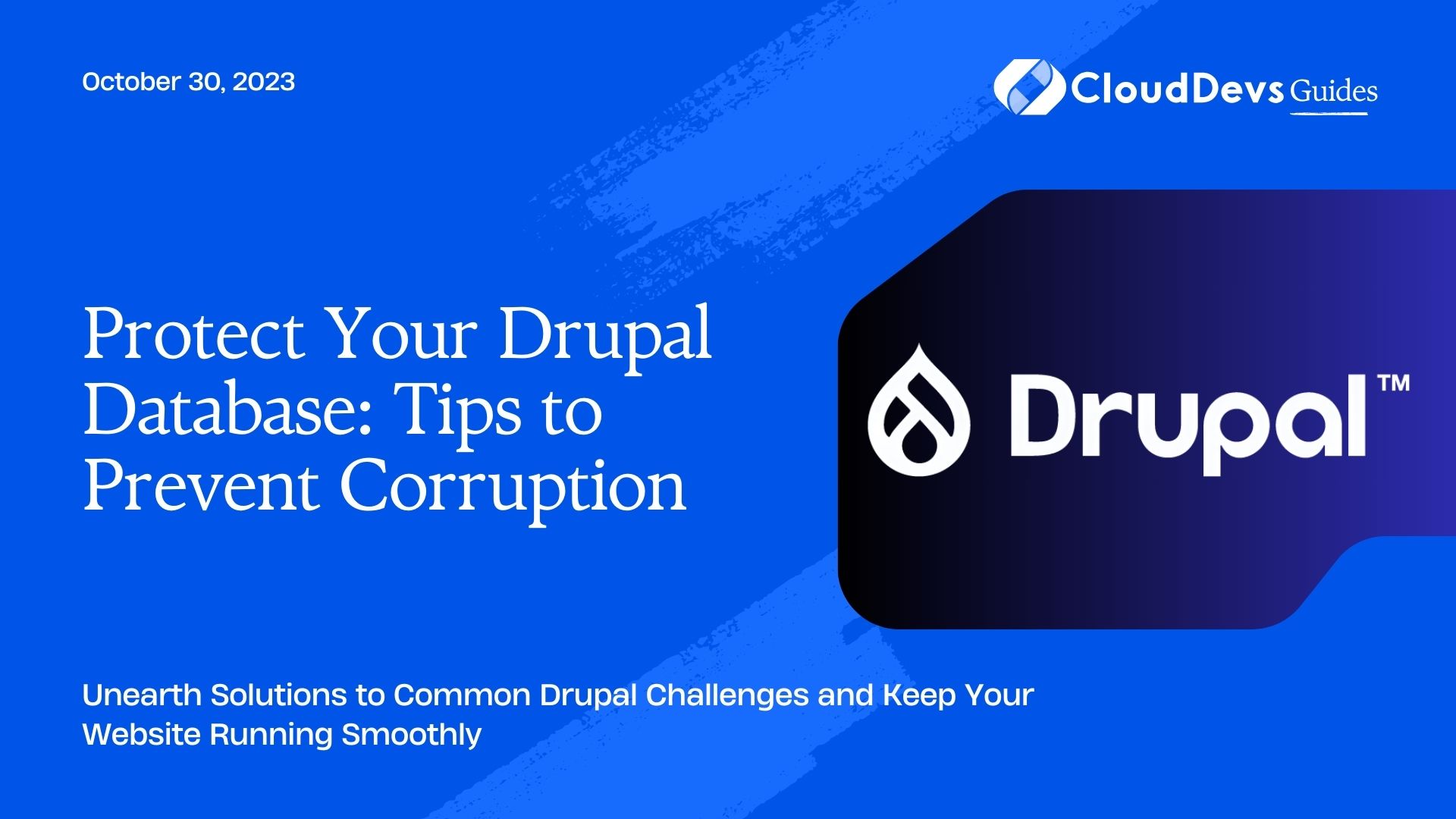Protect Your Drupal Database: Tips to Prevent Corruption
Drupal is a powerful and flexible content management system (CMS) that powers millions of websites worldwide. However, like any software, it’s not immune to issues and challenges that can arise during development or while maintaining a Drupal site. In this blog post, we’ll explore some common Drupal issues and provide solutions to help you troubleshoot and resolve them effectively.
1. White Screen of Death (WSOD)
The White Screen of Death is a notorious Drupal issue where the website displays a blank white screen instead of the expected content. This can be caused by various factors, including PHP errors, memory limit issues, or incompatible modules/themes.
Solution:
1. Enable error reporting: Edit the `settings.php` file and add the following lines:
```
error_reporting(E_ALL);
ini_set('display_errors', TRUE);
ini_set('display_startup_errors', TRUE);
```
2. Check for PHP errors: Review the recent log entries in Drupal’s error log or your web server’s error log to identify and resolve PHP errors.
2. Module Compatibility Issues
Sometimes, Drupal modules may not play well together, leading to conflicts or unexpected behavior. This can happen when modules have conflicting dependencies or when they’re not updated to the latest version.
Solution:
- Update modules: Ensure all modules are up-to-date. Drupal’s Update Manager can help you identify outdated modules.
- Investigate conflicts: Disable modules one by one to identify the conflicting module, then look for solutions or alternatives.
3. Slow Page Load Times
Slow page load times can frustrate users and affect your site’s search engine rankings. Common causes include heavy images, inefficient queries, and excessive external resources.
Solution:
- Image optimization: Compress images, use responsive images, and consider lazy loading to improve page load times.
- Database optimization: Optimize your database by removing unnecessary data and optimizing queries.
- Content Delivery Network (CDN): Implement a CDN to distribute static resources and reduce server load.
4. Broken Links
Broken links can harm user experience and SEO efforts. They can occur due to content changes, module updates, or URL changes.
Solution:
- Use link-checking tools: Regularly scan your website for broken links using tools like Drush or online services like Broken Link Checker.
- Redirects: Implement redirects for changed URLs to ensure a seamless user experience.
- Monitor changes: Keep an eye on content changes, and update links accordingly.
5. 500 Internal Server Error
A 500 Internal Server Error is a generic error message that can be caused by various issues, such as misconfigured server settings, resource limits, or faulty code.
Solution:
- Check server logs: Review your server’s error logs to pinpoint the specific issue causing the 500 error.
- Increase PHP memory limit: Edit the `php.ini` file to increase the memory_limit setting to meet your site’s requirements.
- Debug code: Use Drupal’s debugging tools to identify and fix problematic code.
6. Accessibility Issues
Ensuring your Drupal site is accessible to all users is crucial. Common accessibility issues include missing alt text for images, improper heading structures, and keyboard navigation problems.
Solution:
- Accessibility audit: Use tools like WAVE or aXe to perform accessibility audits and address identified issues.
- Train content creators: Educate content creators on accessible content practices and provide guidelines.
- Use accessible themes: Choose and customize Drupal themes that adhere to accessibility standards.
7. Database Corruption
Database corruption can lead to data loss and site instability. It can occur due to hardware failures, improper shutdowns, or other issues.
Solution:
- Regular backups: Implement a robust backup strategy to ensure you can restore your site in case of database corruption.
- Repair database: Use Drupal’s built-in database repair tools or consult with your hosting provider to fix corrupted tables.
Conclusion
Drupal is a powerful CMS, but like any software, it can encounter issues that require troubleshooting and resolution. By familiarizing yourself with these common Drupal issues and their solutions, you can keep your Drupal site running smoothly and provide a better user experience for your visitors. Regular maintenance, updates, and monitoring are essential to prevent and address these issues effectively.
Table of Contents







